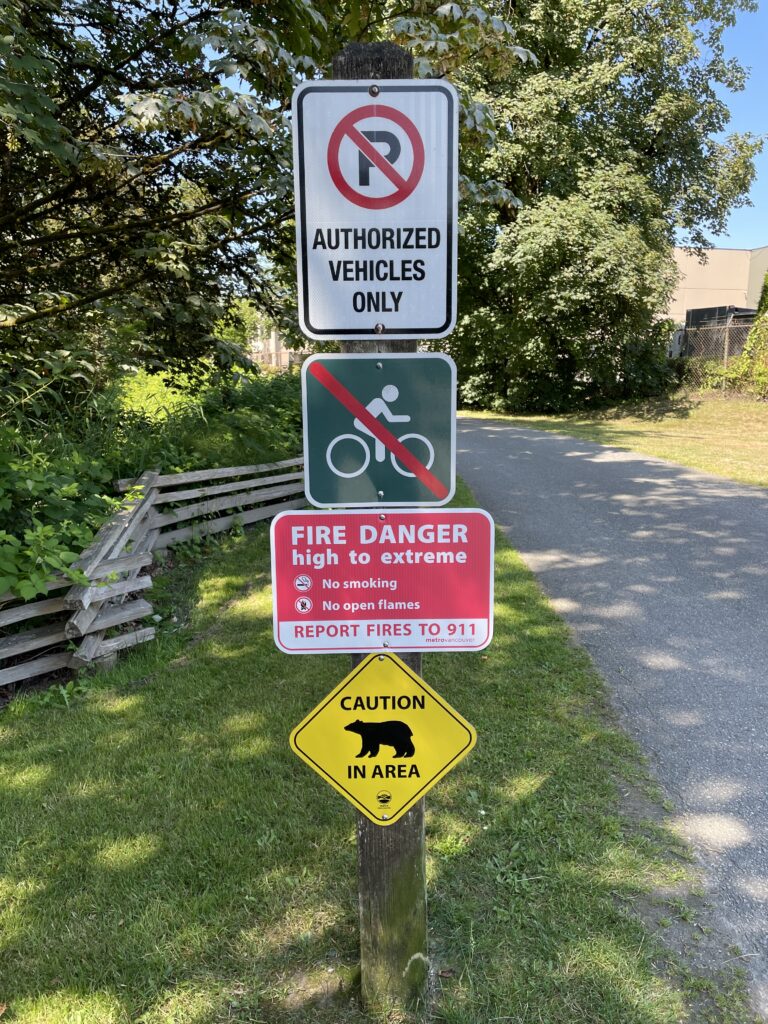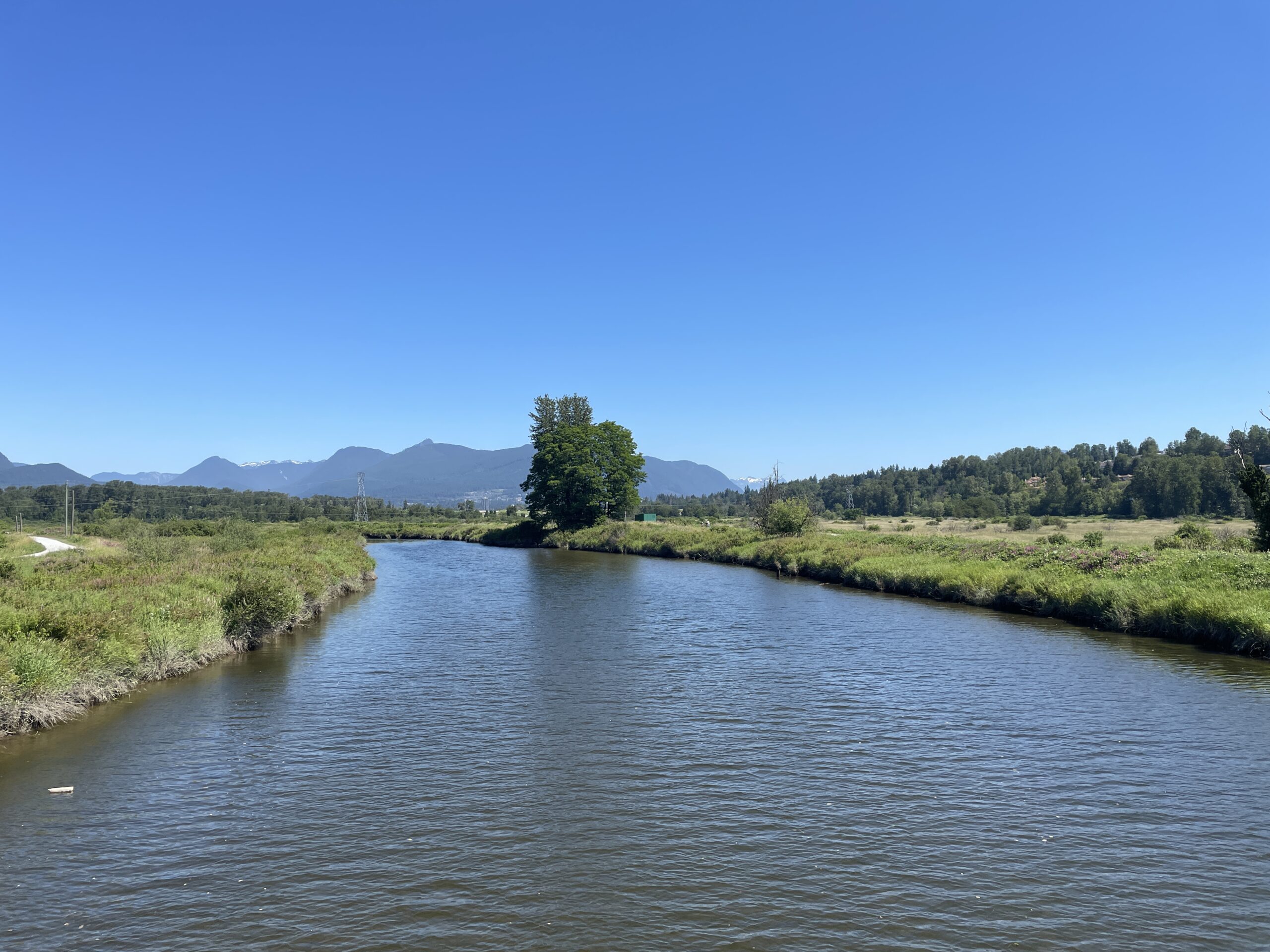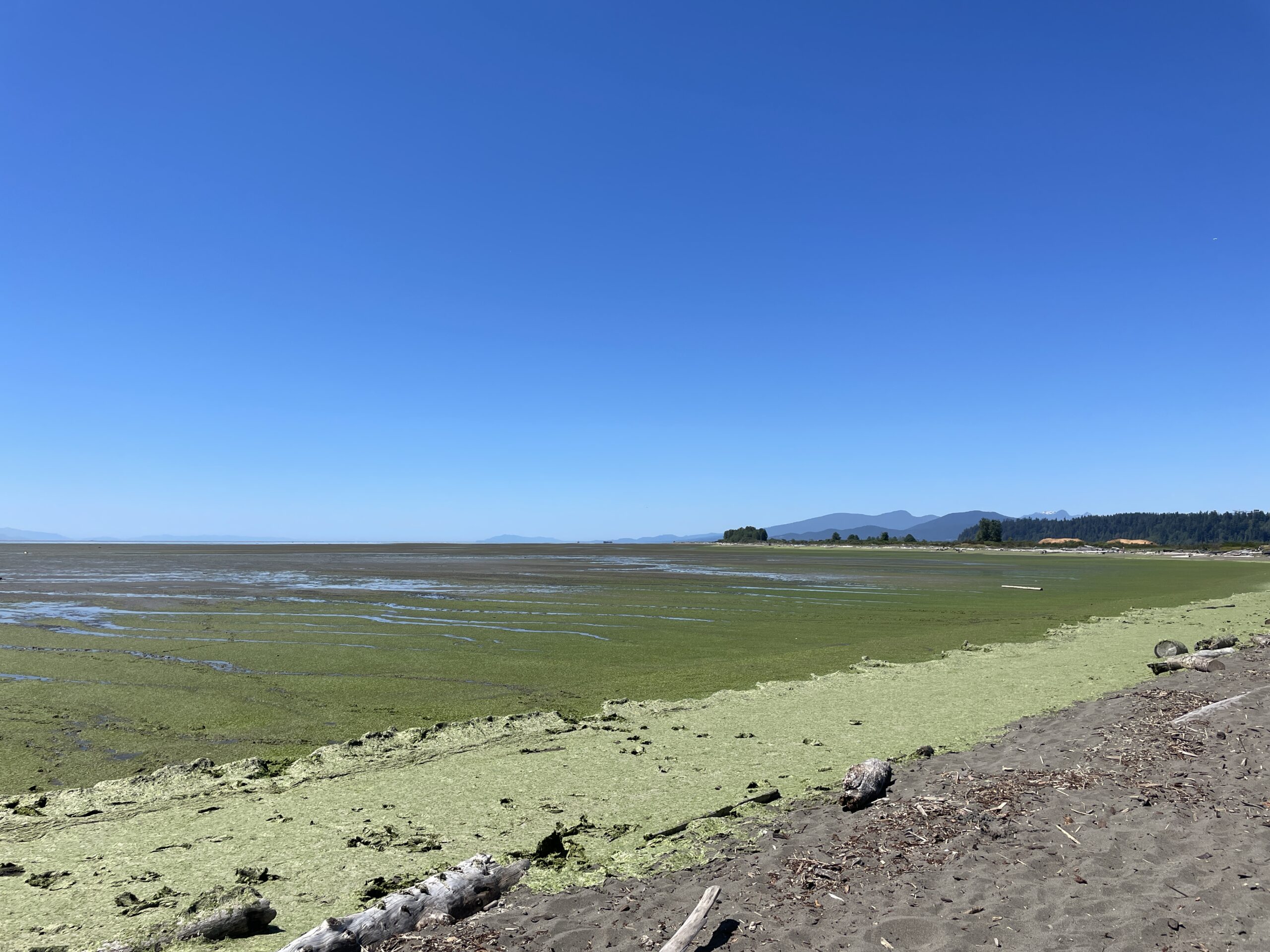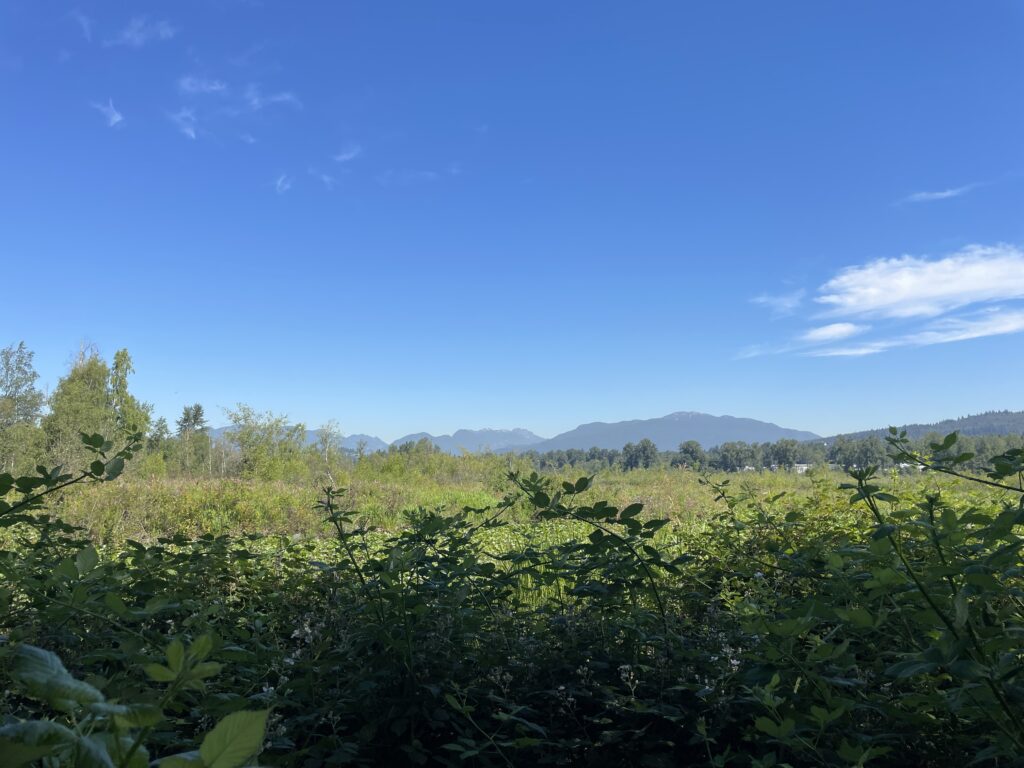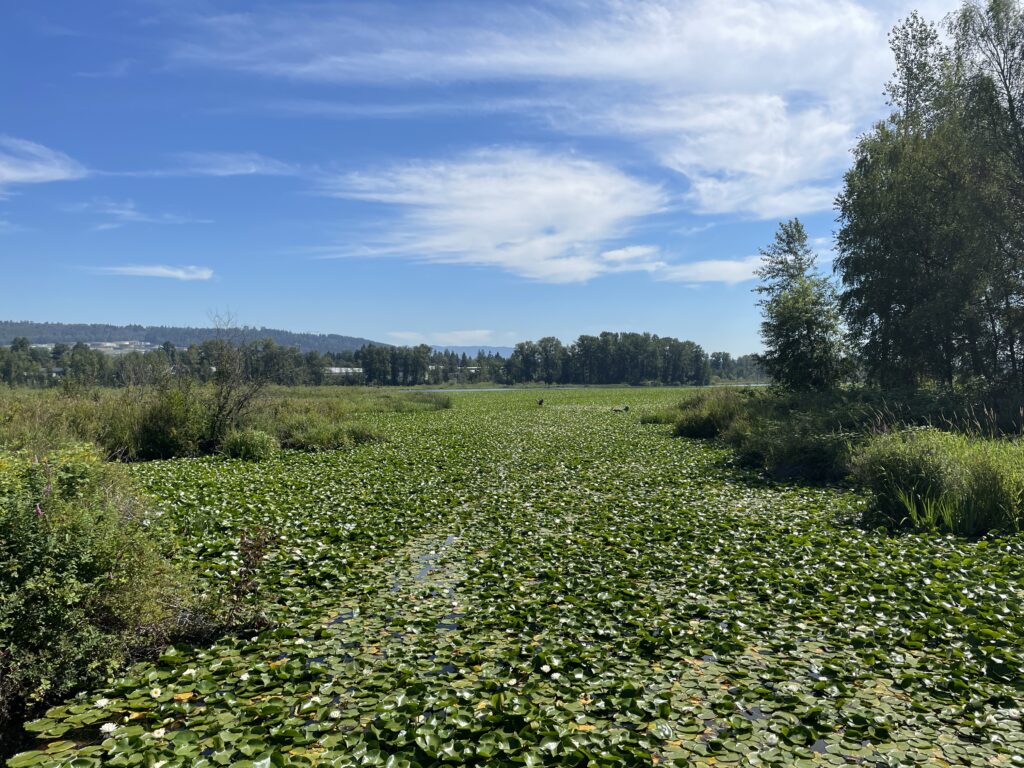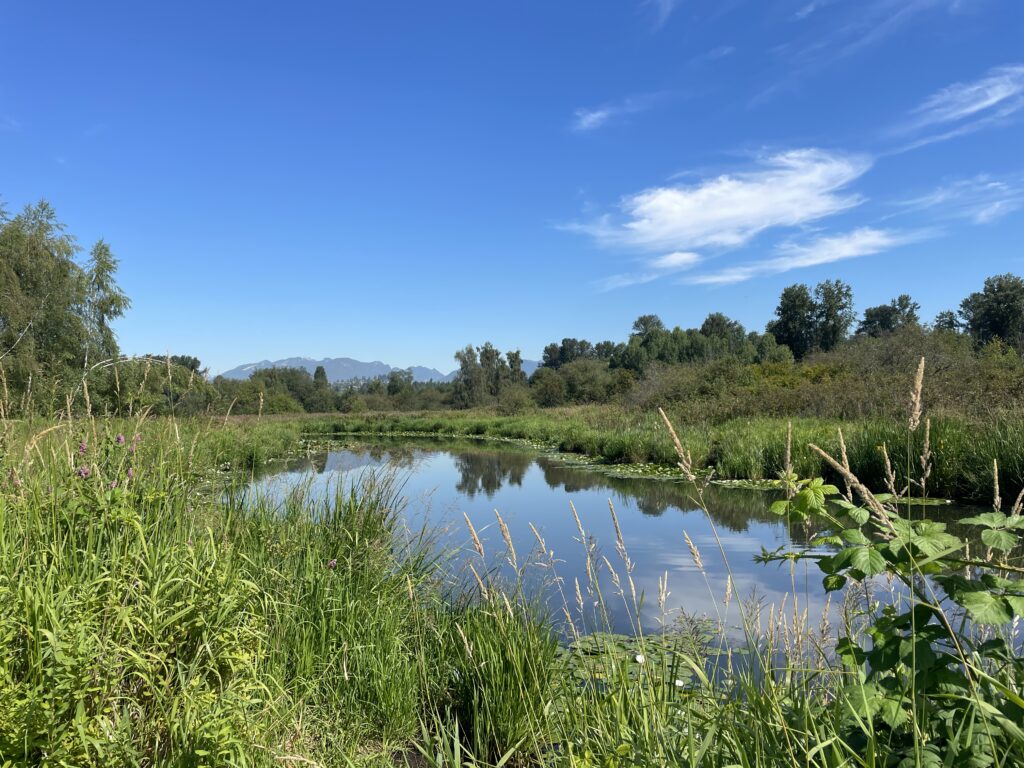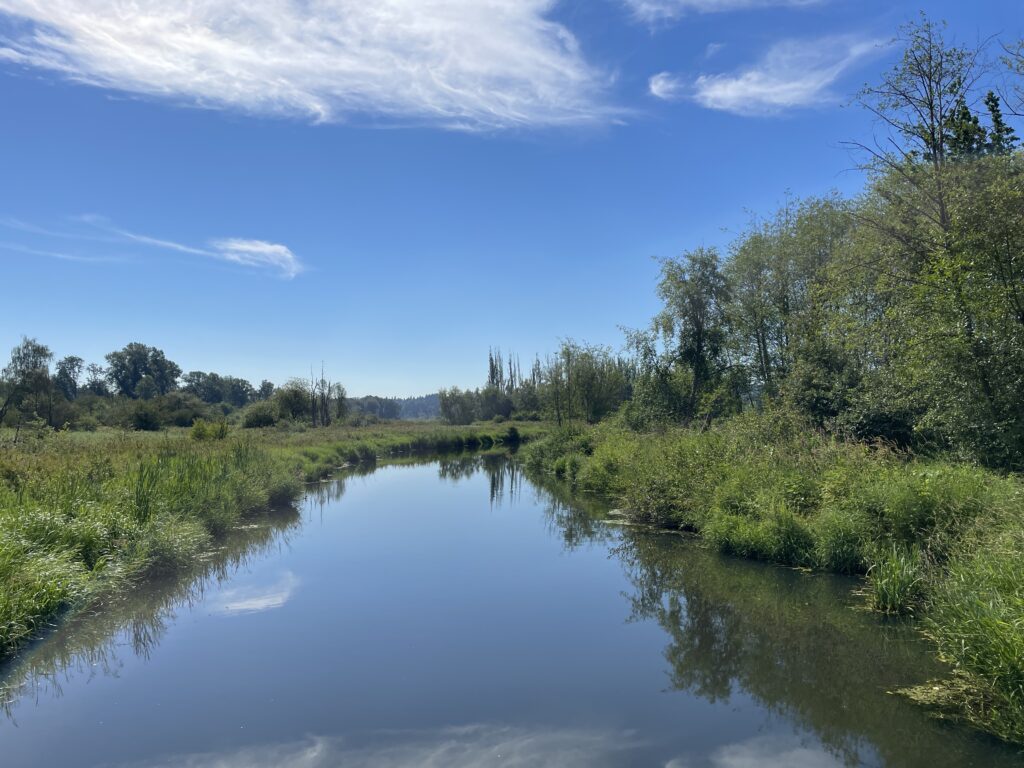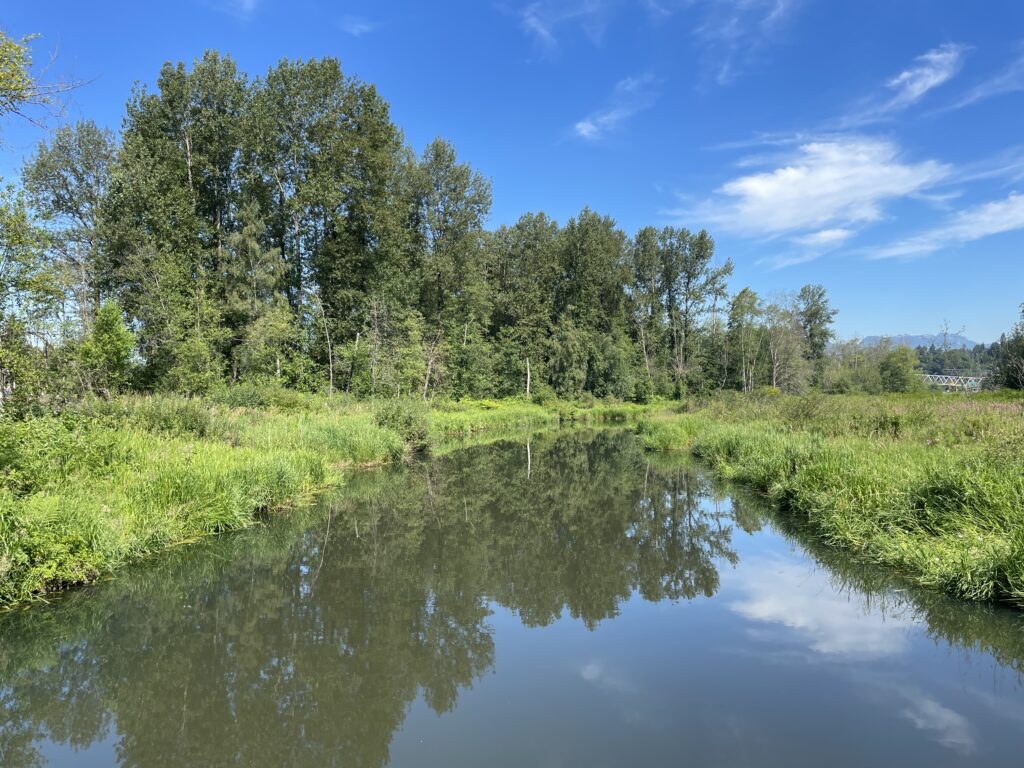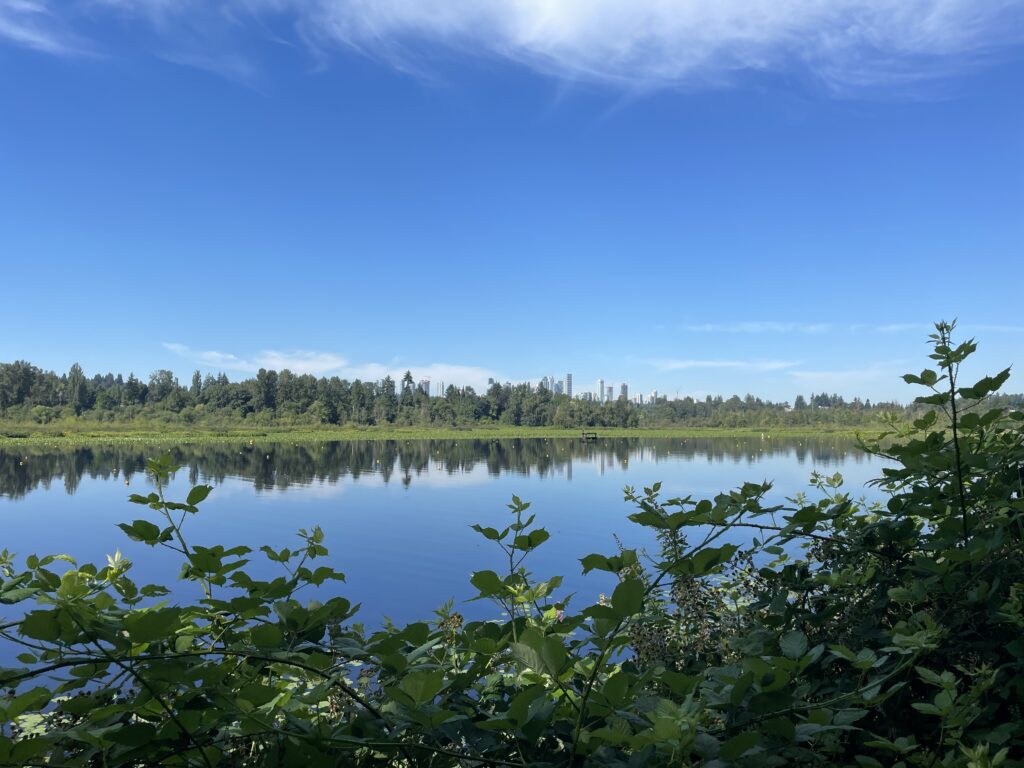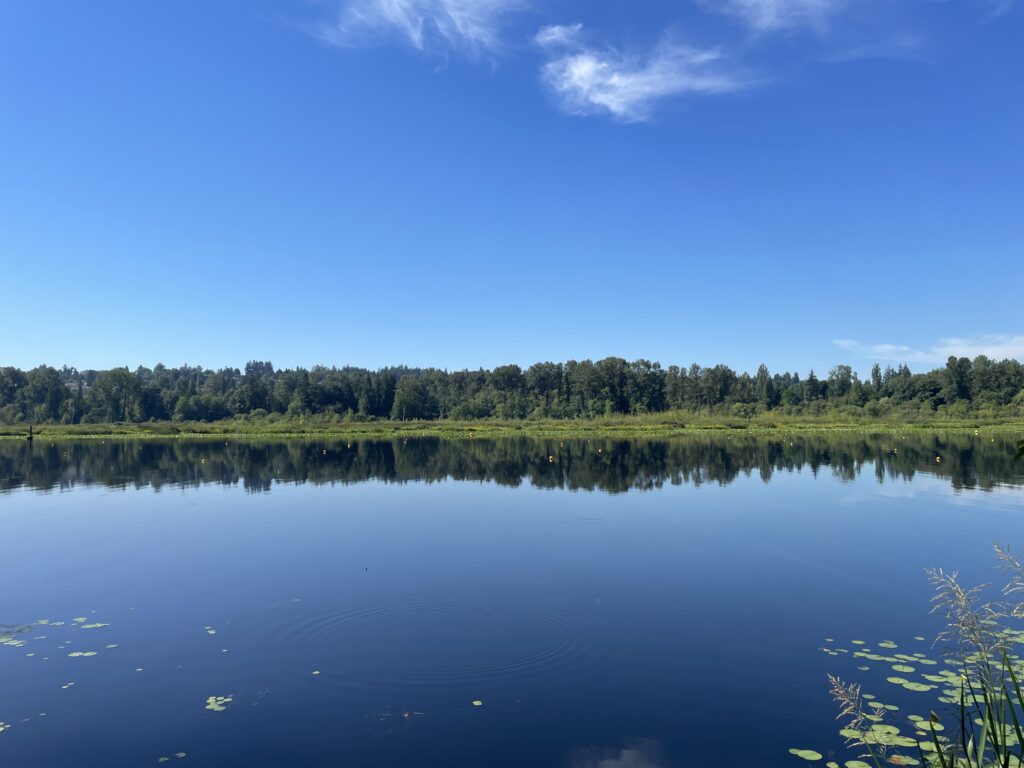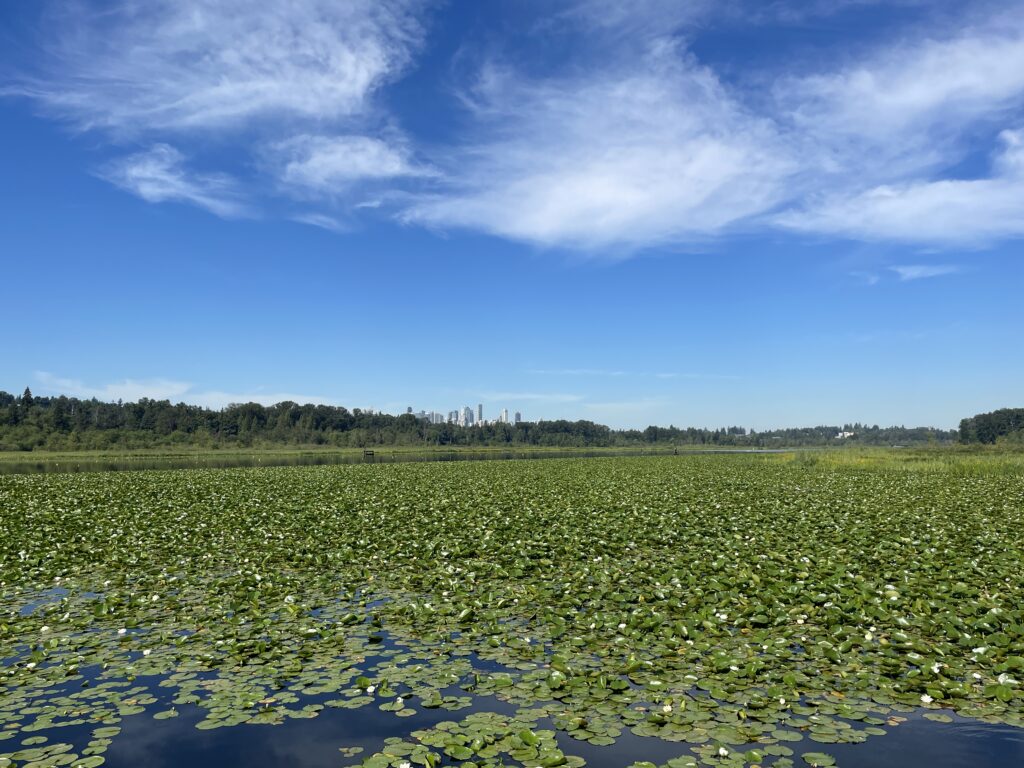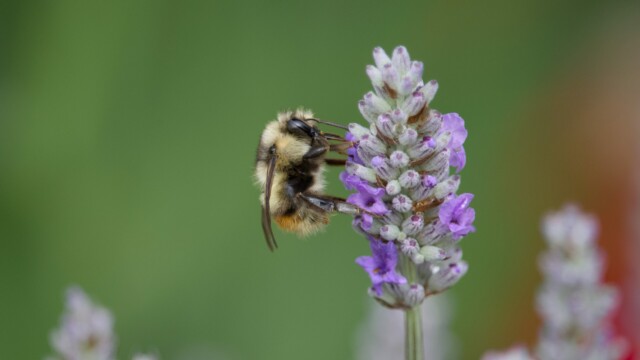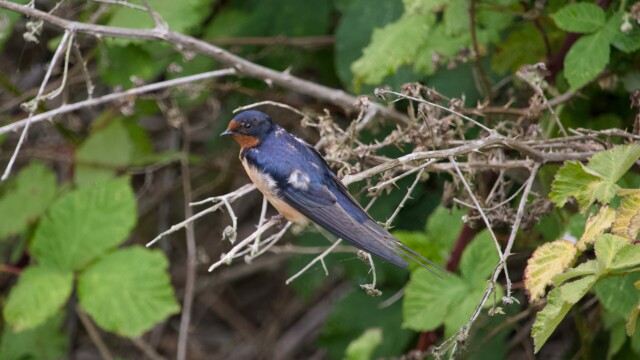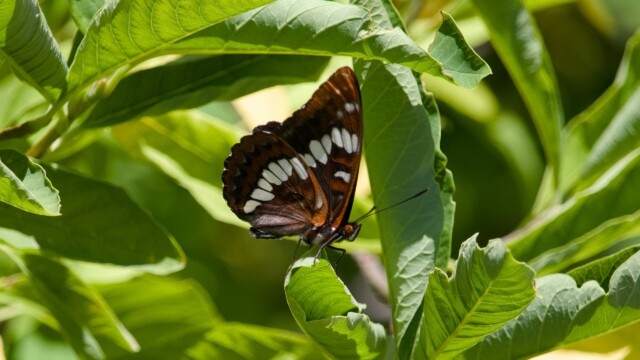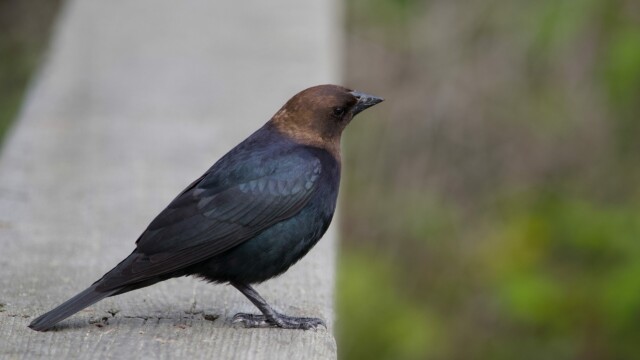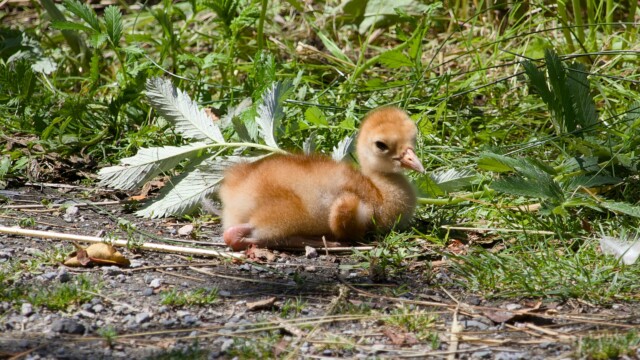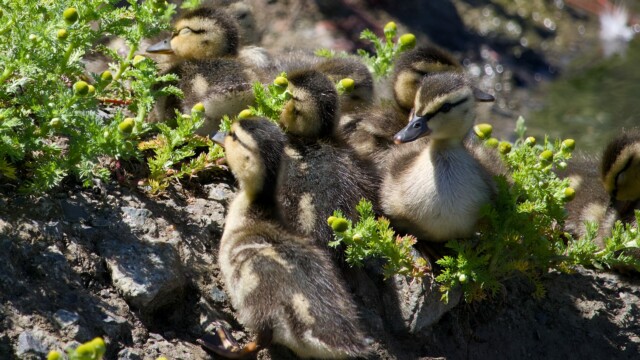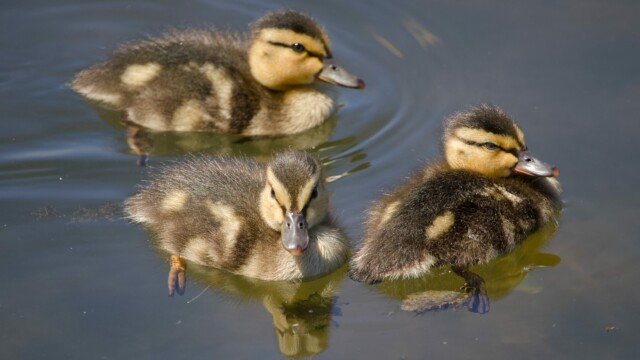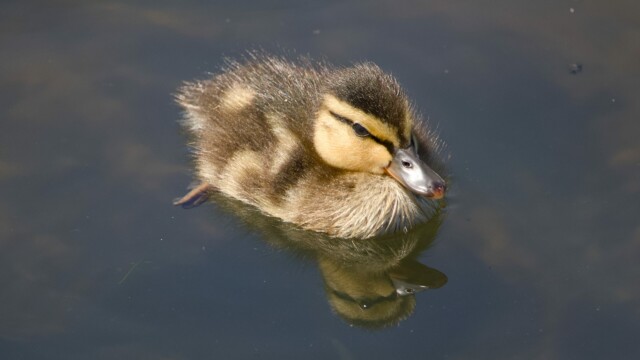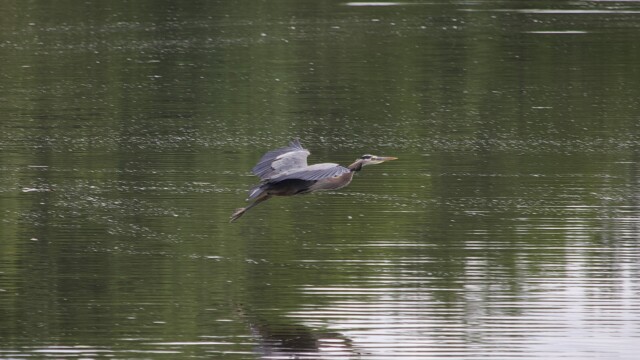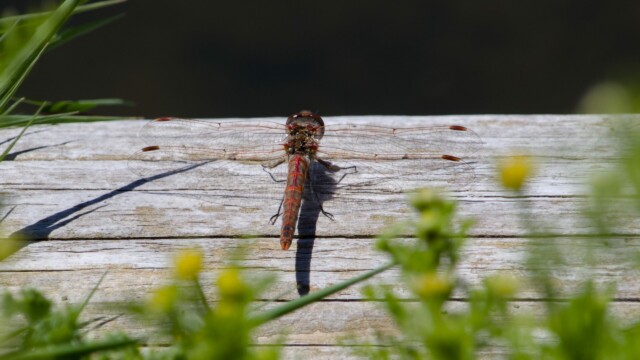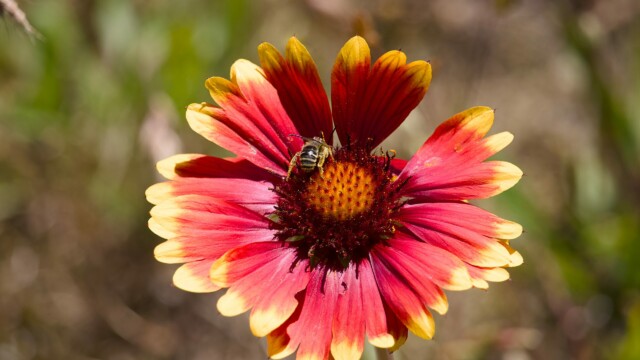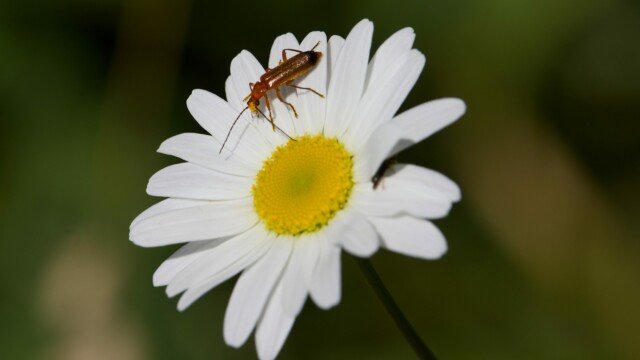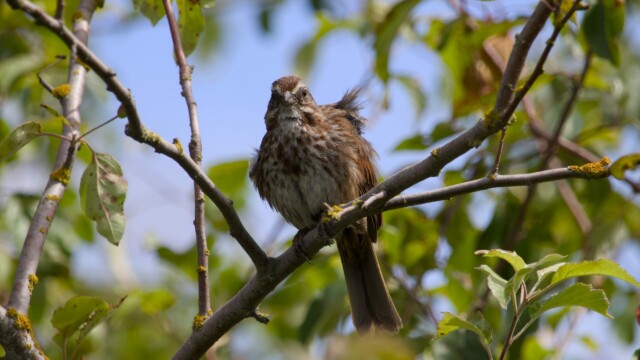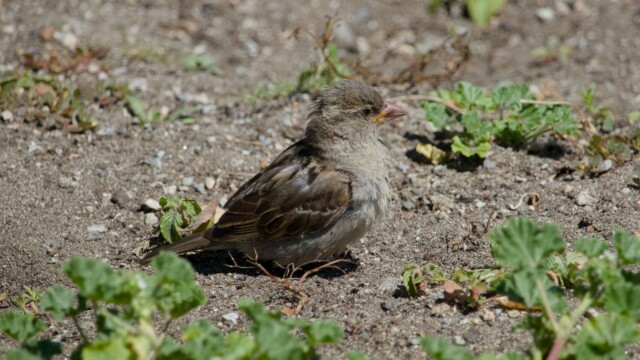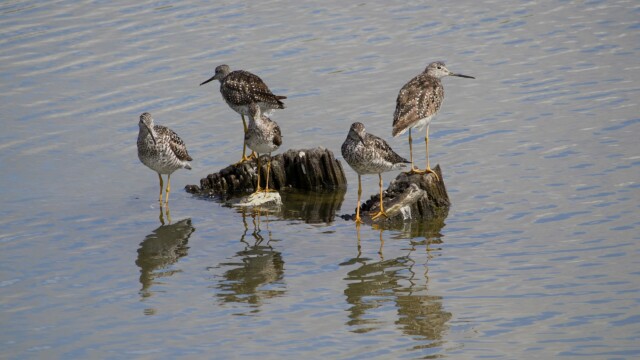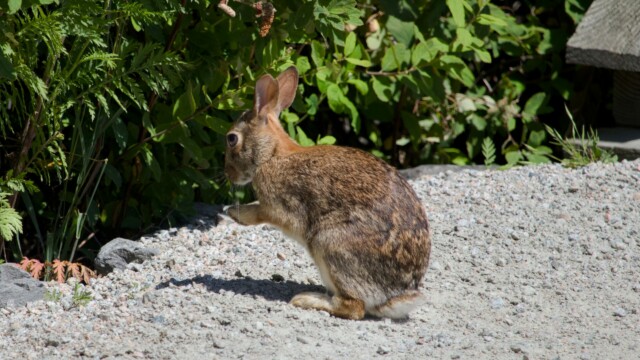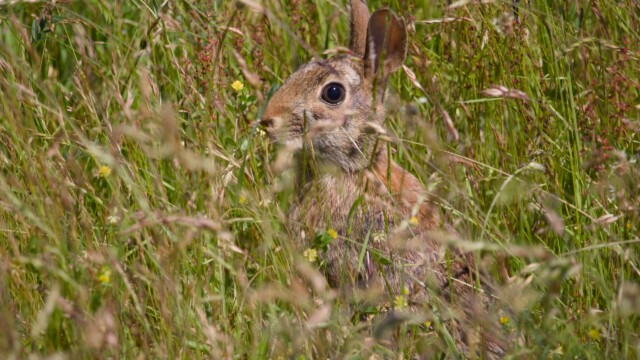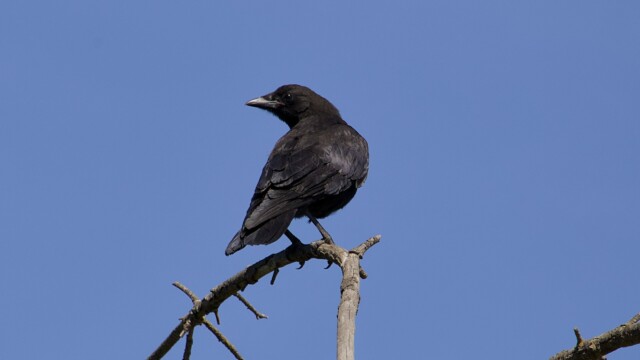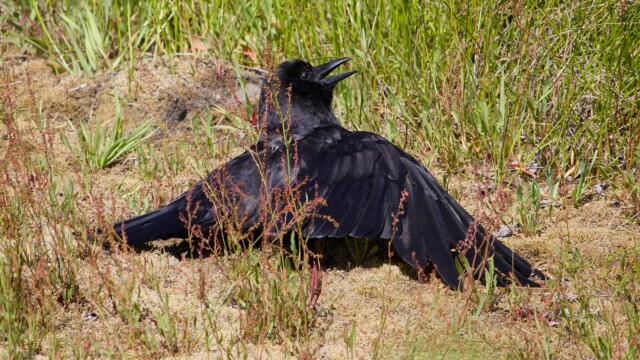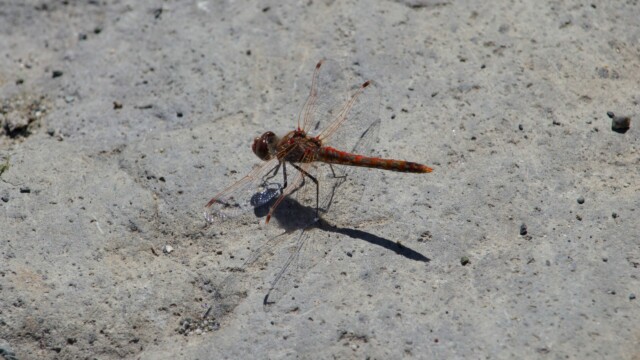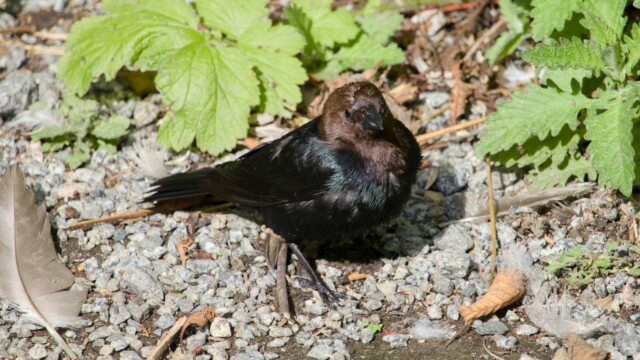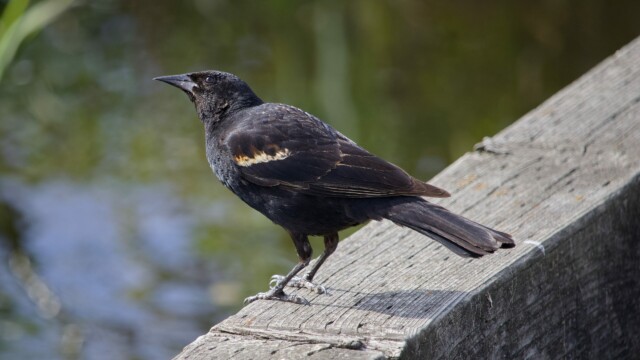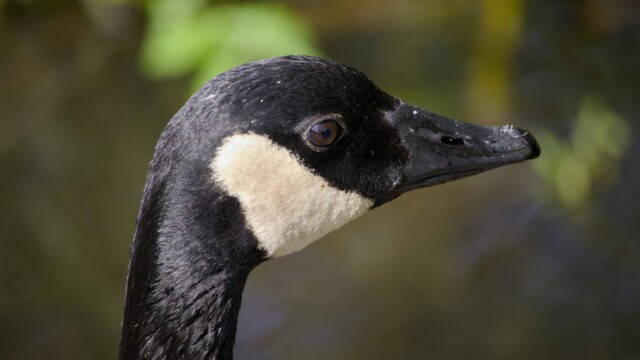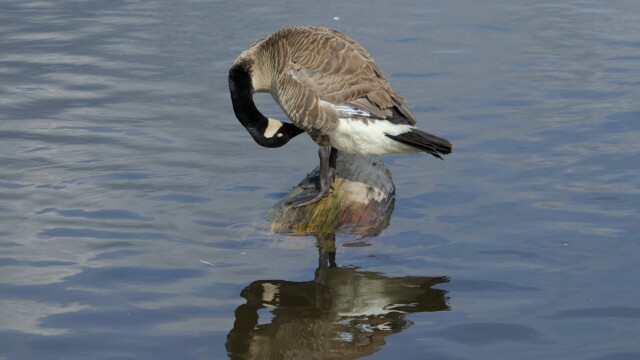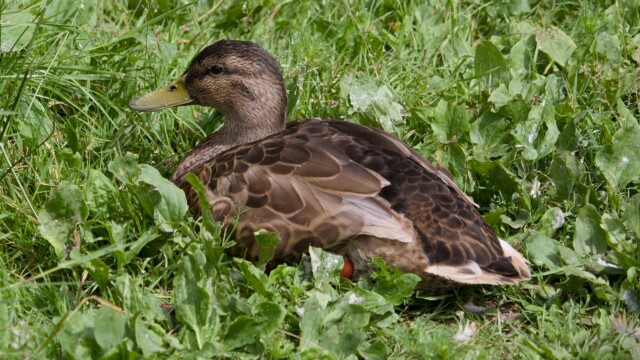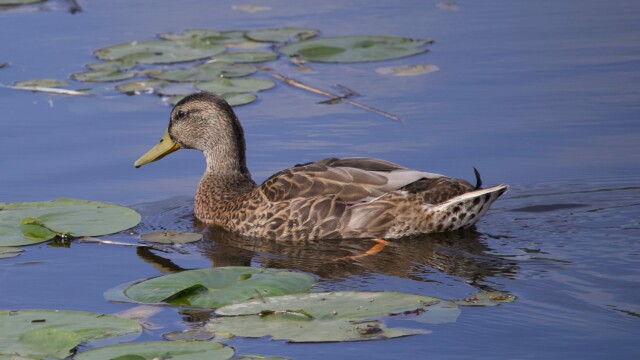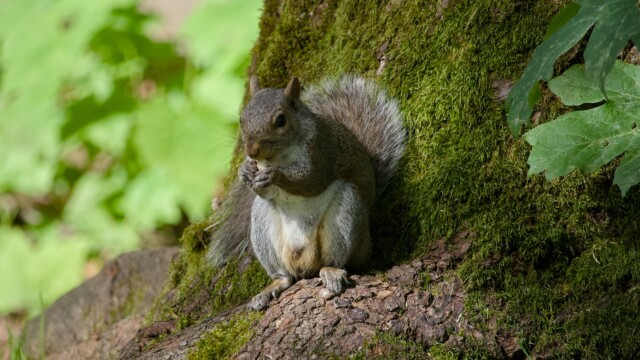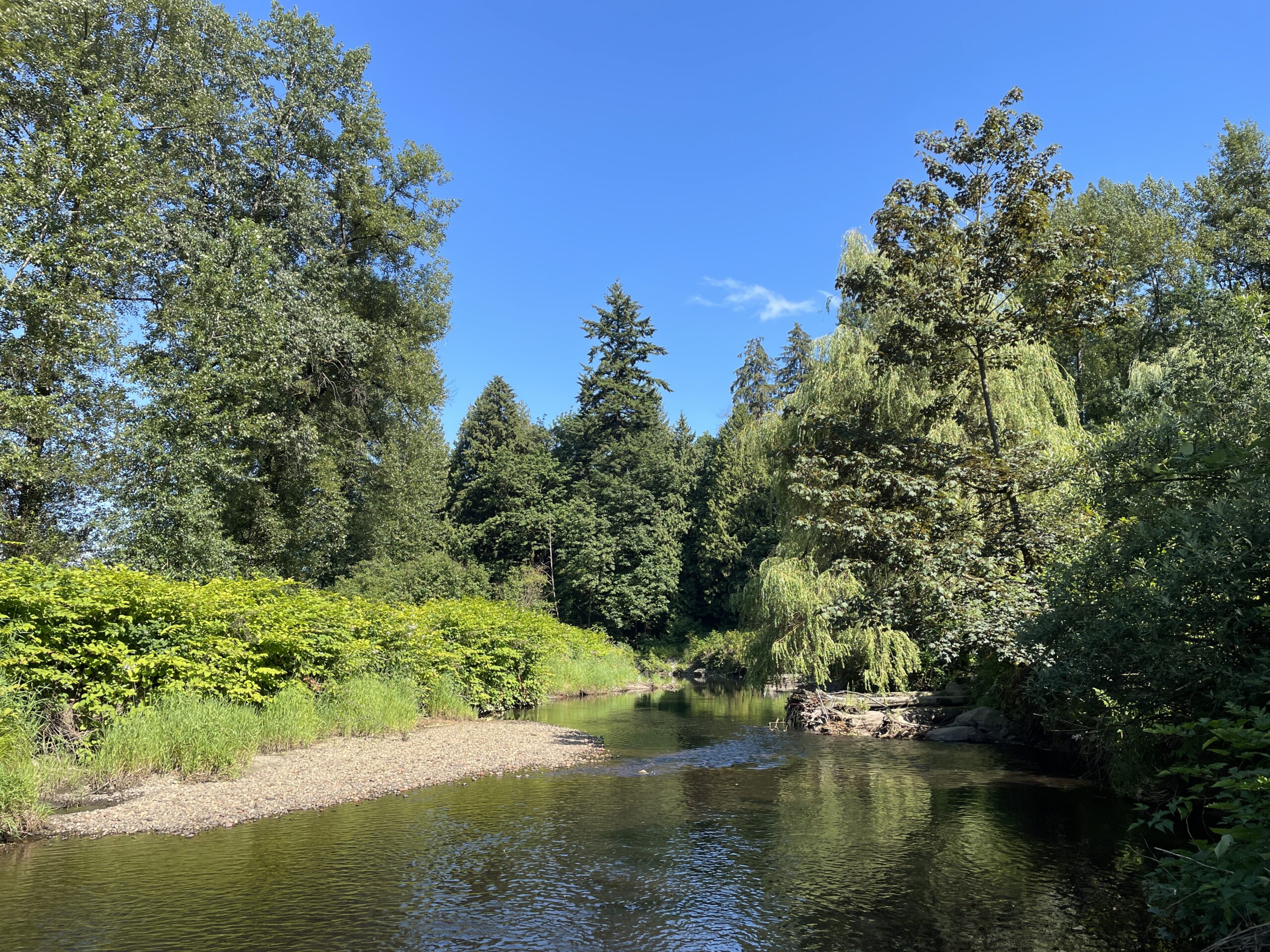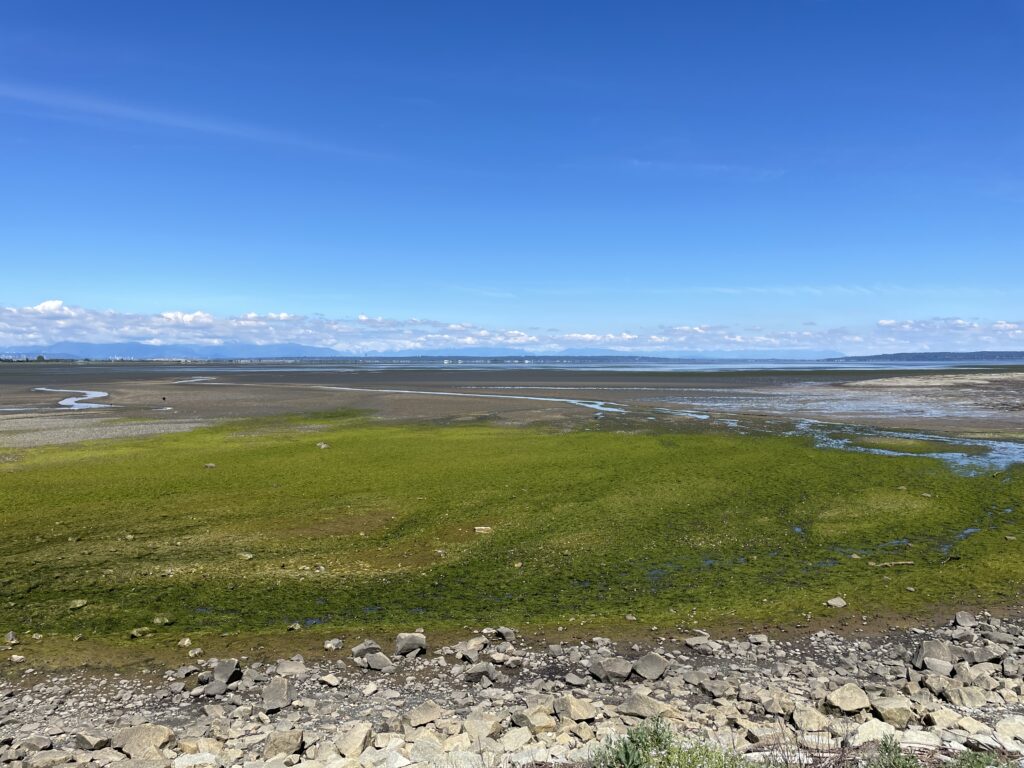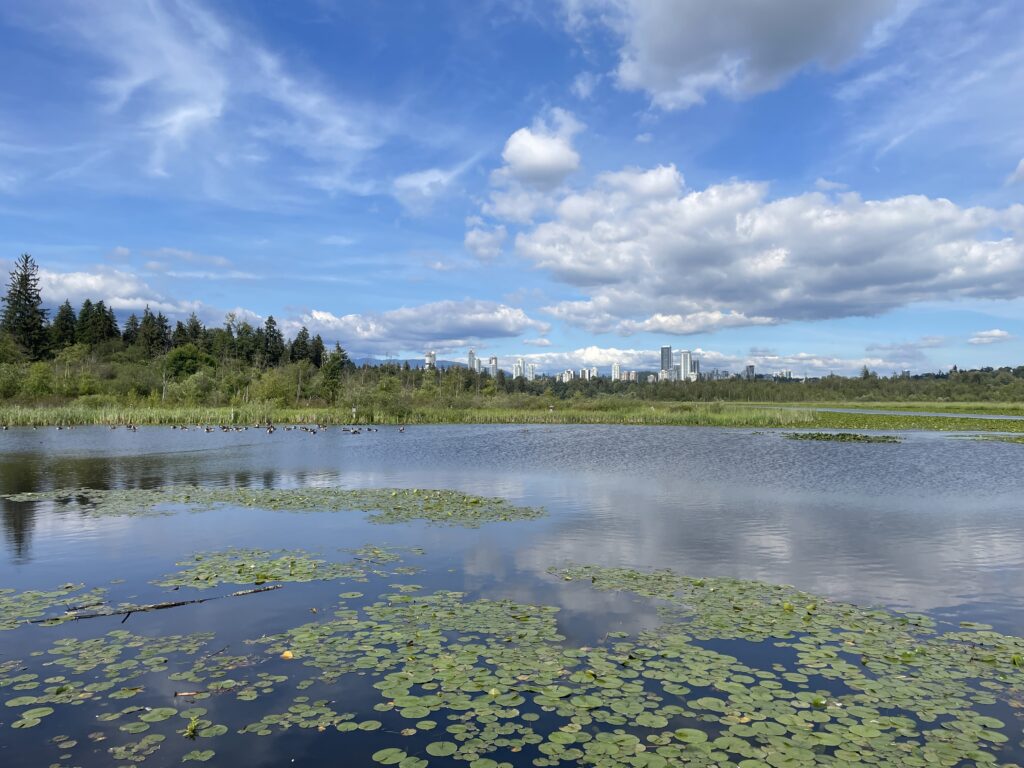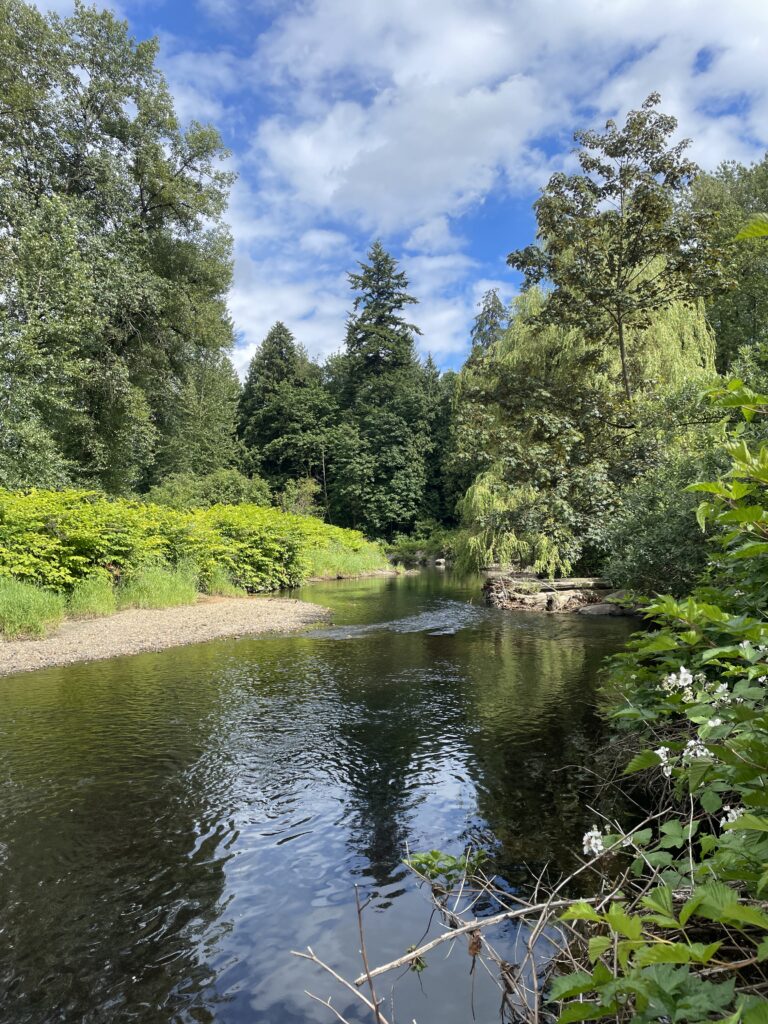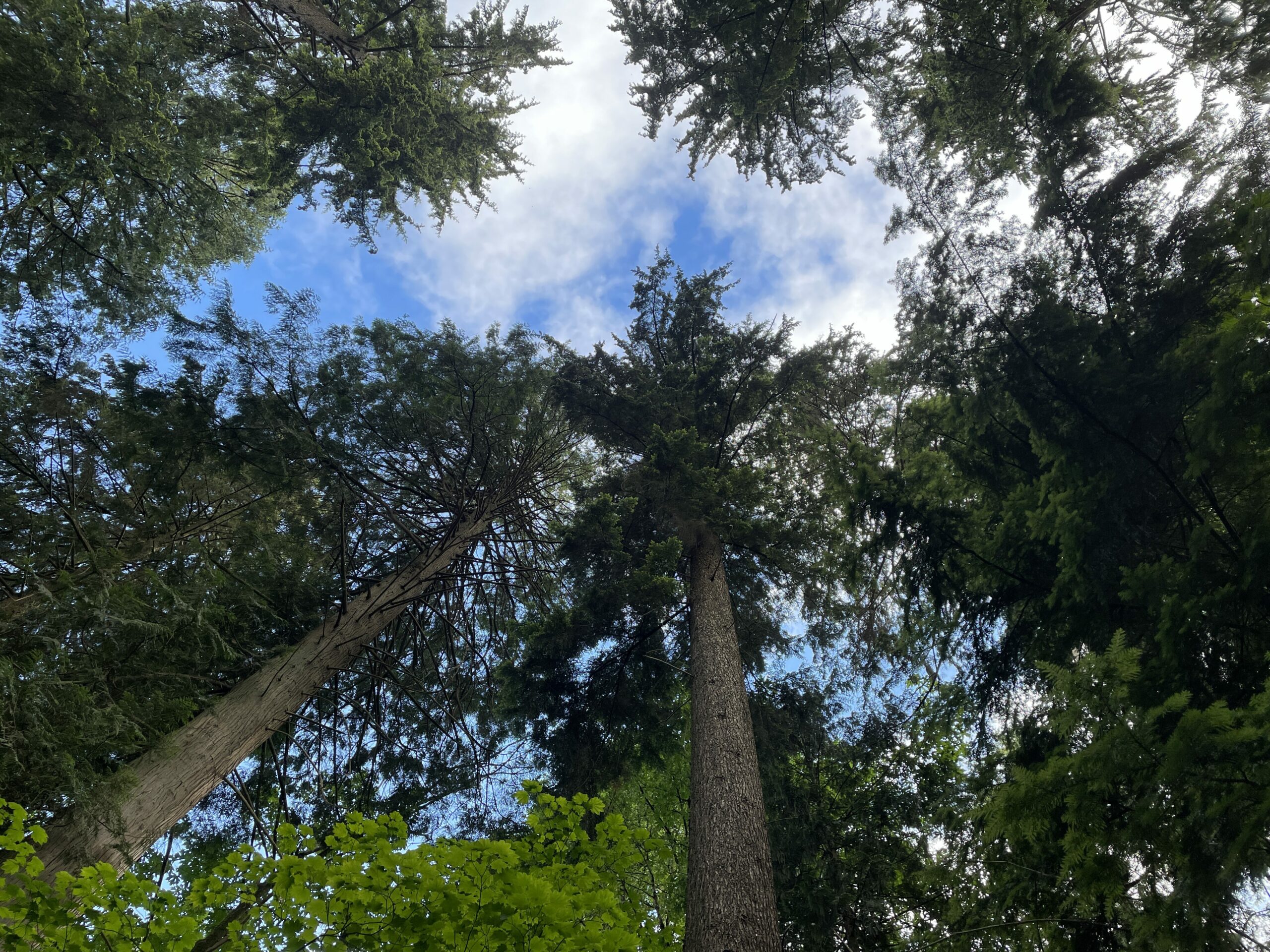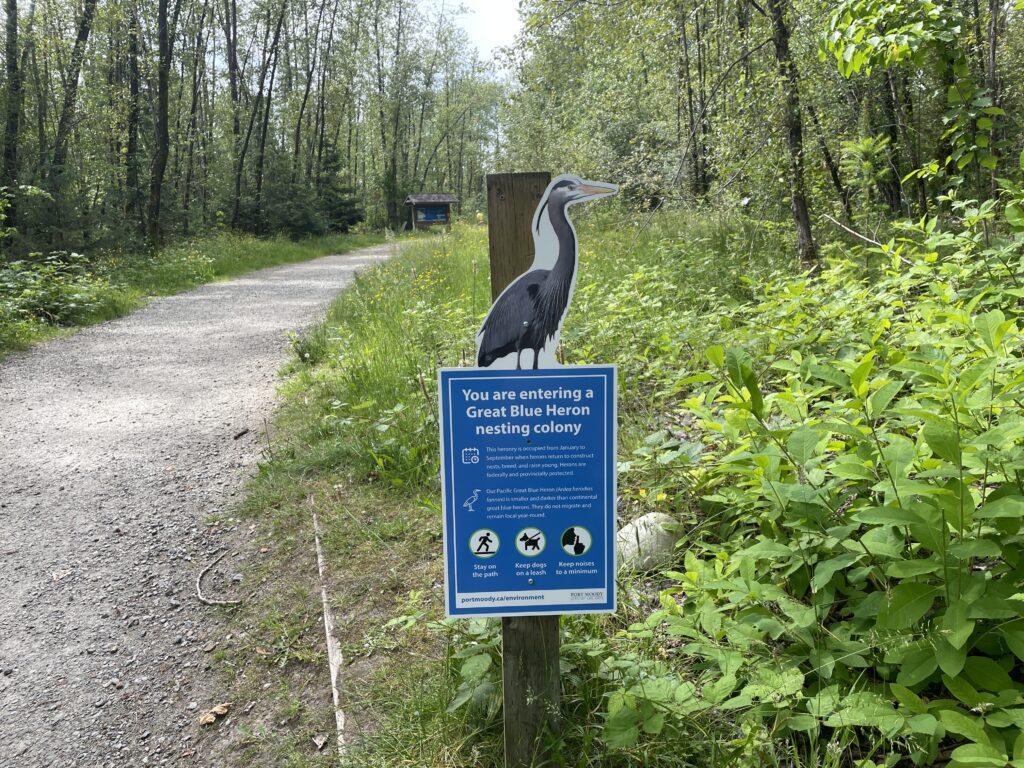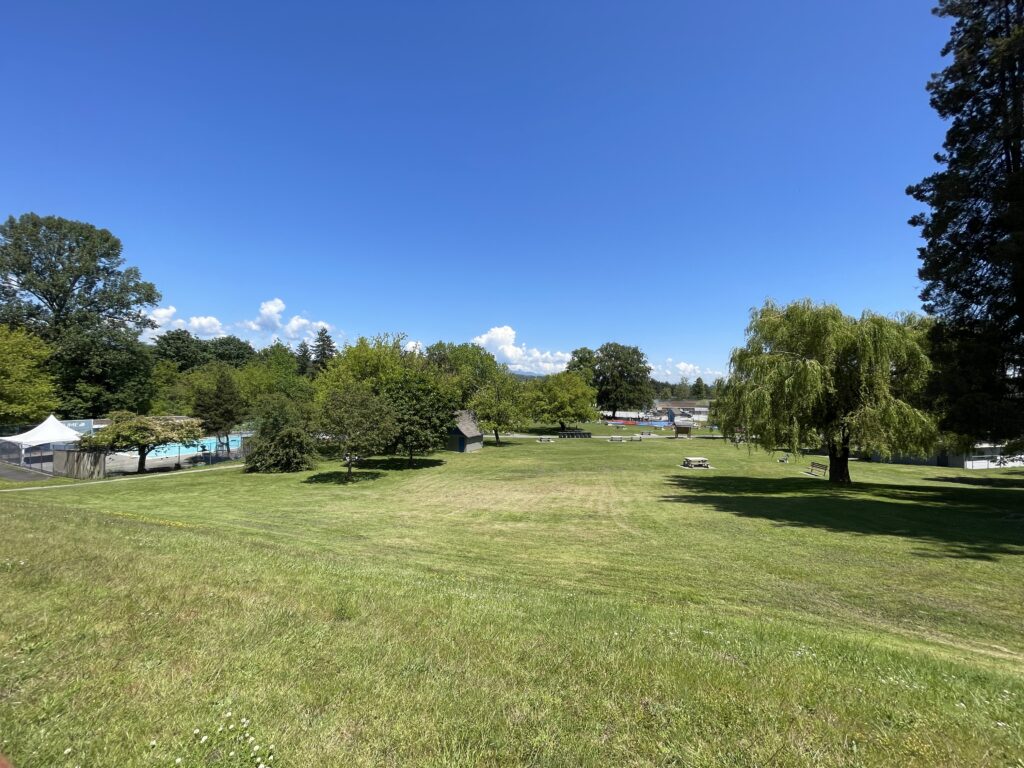Where: Piper Spit, Burnaby Lake (Burnaby), Tlahutum Regional Park (Coquitlam), Maplewood Flats (North Vancouver)
Weather: Sunny, 23-27°C
The Outing
Piper Spit

We broke tradition two ways: Going birding on a Sunday and hitting Piper Spit first. The outing got off to a near-calamitous start when Nic found he could not adjust the f-stop on his camera. He fixed it by doing a variation of the classic turn it off/on by removing his telephoto lens, then putting it back on. Electronics are weird!
Near the dam, we saw some baby wood ducks, but not exactly close-up. We continued on and at the stump with the freaky fungus we saw a pair of Douglas squirrels being simultaneously adorable. One sat on top of the stump, eating a large nut like a cob of corn. I like squirrels because they like to eat and when they eat, they don’t move, which means I can usually get good shots. This seems increasingly important now, as my camera, or parts of it, seem to be experiencing an increasing array of issues. More on this later.
Once at the spit itself, the land mass to the east has returned, after multiple weeks of very hot and dry weather. It was pretty much Goose Island.
As expected, there wasn’t much variety in the waterfowl–mostly mallards and wood ducks with their prim new mullets. However, even the songbird population seemed to be largely elsewhere, save for an errant song sparrow and a mass of blackbirds hopping and flying about, seed smeared on their beaks. We witnessed a surly kid blackbird demanding to be fed by a parent, then proving himself completely capable of feeding himself when the parent took too long. Kids!
We got intel on where to find a lazuli bunting at Tlahutum, which was conveniently our next stop.
Tlahutum Regional Park

By now it was still rather humid and clouds began gathering. Some of them looked moisture-laden, but I hadn’t seen any showers in the forecast. You can probably see where this is going.
The directions for the bunting took us outside the park proper, to a nearby grass labyrinth and the titular hidden driveway (also the name of the album by my country punk fusion band). We listened, we looked, we trod around, but we heard no buntings and we saw no buntings. We left, buntless.
At the community gardens, we noted an absence of swallows, which may have already started heading off on their fall migration. In their place, a few robins, towhees and one elusive American goldfinch (I got one shot before it flew off).
By now, my camera–which I had cleaned the night before–was starting to show issues, the most prevalent being an inability for the shutter to engage, also sometimes accompanied by an inability to change focus. I did some experimenting with my kit lens and have made a provisional diagnosis that the problem lies with the telephoto lens or the adapter it uses. Look, if I win the $30 million 6/49 jackpot, I promise I will donate oodles of money to good causes and be a level-headed millionaire. But I will also totes buy a new camera, because even repairing this one is probably not worth it.
We elected to skip the rest of Tlahutum this time and headed off for lunch.
The shower–intermittent and half-hearted, began with lunch, but ended before we got to Maplewood Flats. Traffic on the highway was so slow (it was Sunday, too, remember, not rush hour on Wednesday or something) that we lost the GPS signal on Google Maps while going through the Cassiar Connector.
Maplewood Flats
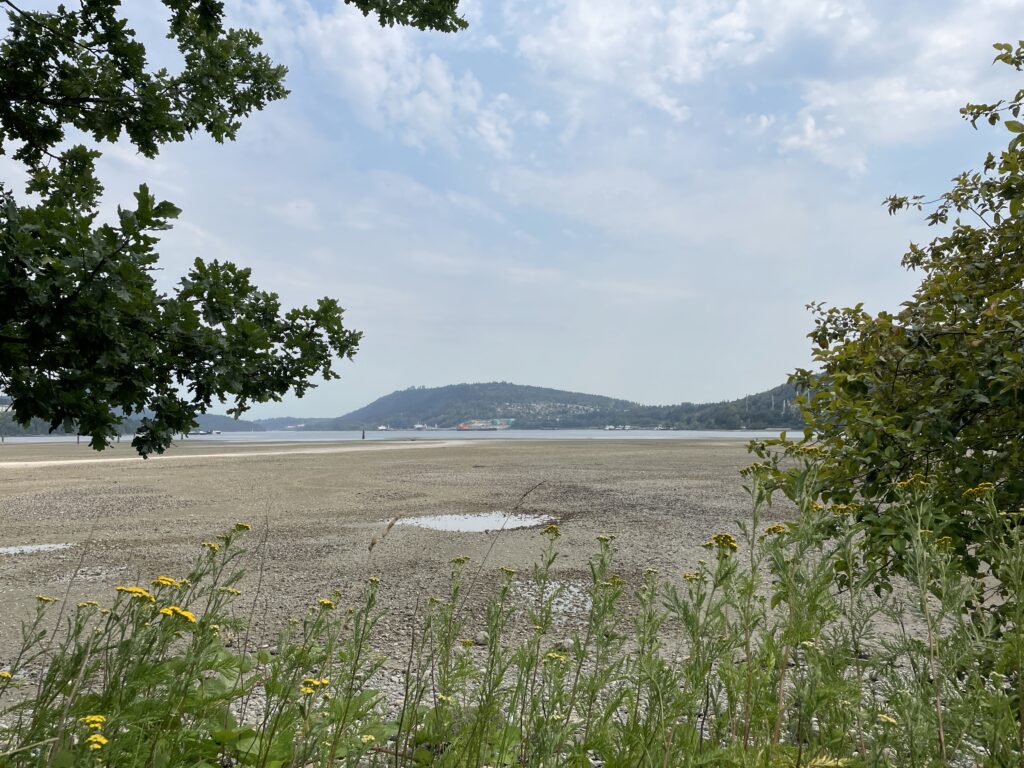
Maplewood Flats had better light than we expected, but birds were scarce, despite a whiteboard near the entrance showing off all kinds of semi-exotic species that had been sighted here in the last few weeks. We saw some seagulls and cormorants, as well as a mallard mom and her snoozing brood by an inner pond. There are now even more signs warning people to keep off the mudflats, and the tide was indeed very low, exposing much of the shoreline. We were good and did not venture out.
In the end, I only shot a little over 250 photos, or about 1.25 batteries’ worth. With the paucity of birds, the high humidity and my camera being weird, it was a fine day to be out and enjoy the views, but maybe not so great for actual birding.
And now I’m off to write tracks for Hidden Driveways.
The Shots
Soon™
The Birds (and other critters). Rare or rarely-seen birds highlighted in bold.
Sparrows and sparrow-adjacent:
- American goldfinch
- American robin
- Black-capped chickadee
- Brown-headed cowbird
- Purple martin (maybe?)
- Red-winged blackbird
- Song sparrow
- Spotted towhee
Waterfowl and shorebirds:
- Canada goose
- Cormorant
- Great blue heron
- Mallard
- Wood duck
Common:
- American crow
- Rock pigeon
- Seagull
Raptors:
- None
Non-birds:
- Assorted pollinators
- Douglas squirrels




